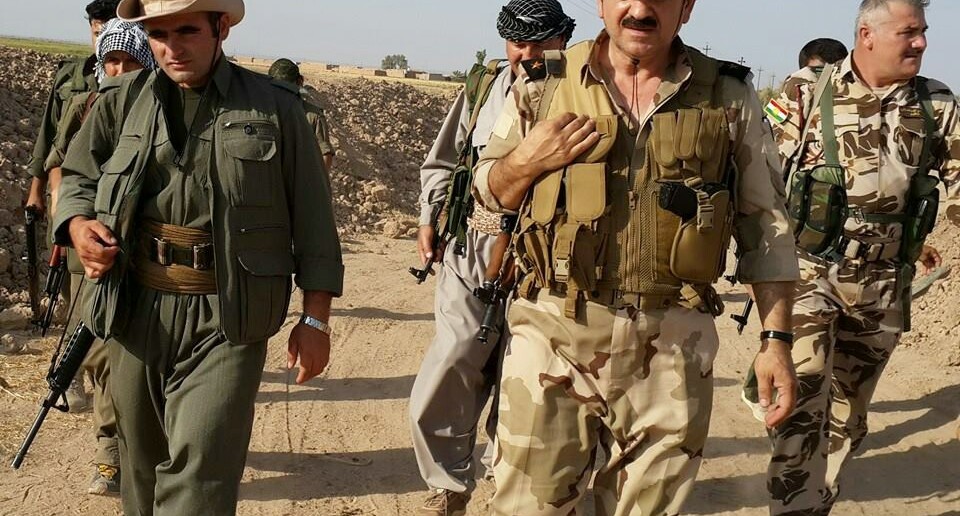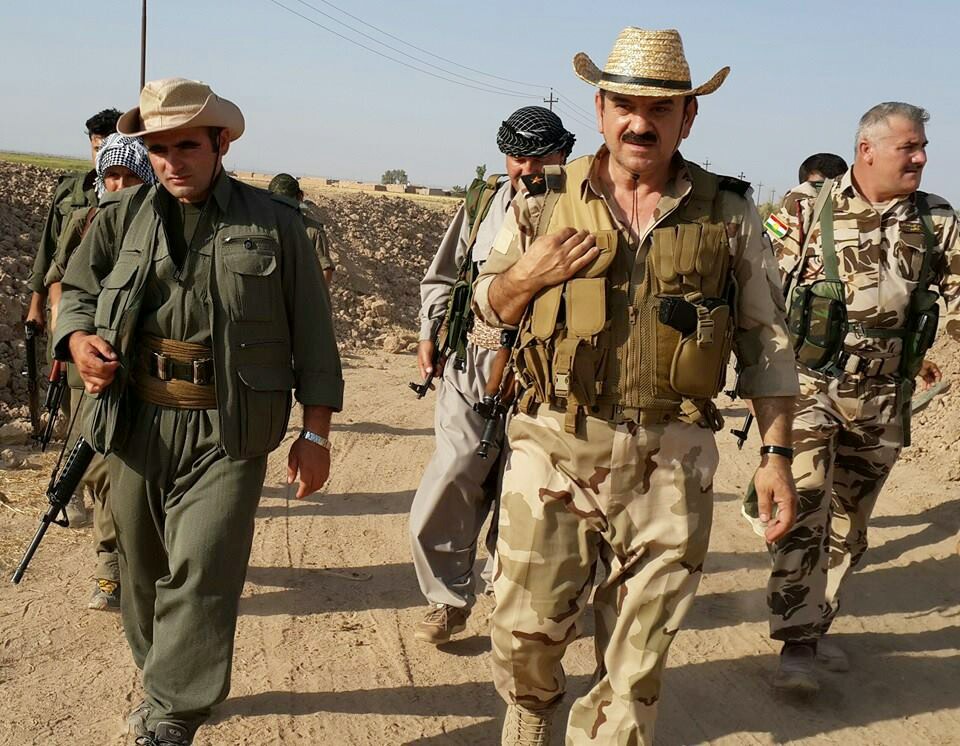
It should be clear even to the untrained observer that the Obama Administration doesn’t have anything resembling a strategy to fight – or more importantly, end – the horrendous cauldron of civil war in Syria, the ISIS insurgency in Northern and Western Iraq, or the broader Mesopotamian-Levantine strategic competition between the US-aligned Sunni bloc and Iran. That’s understandable, given that this is an immensely complicated conflict with no easy answers. But it’s not acceptable. The stakes are too high for American and global security, and the US needs to find a strategy to bring a new order to the region; one that is relatively stable and amenable to its security interests. Russia’s self-insertion into the Syrian and Iraqi conflicts decisively on the pro-Assad side intensifies the need to have an American counter-strategy.
Such a strategy must be premised on a goal—when the dust clears, who does America want running the territory between the Tigris and Tartus? The only two viable centers of political power in Syria today are the Assad regime and the broad Syrian jihadist movement. Both, in power, threaten the stability and unity of the country, and as such American policy cannot support either. This is why Russian policy in Syria is doomed to fail, too. The Assad regime’s brutality toward its own people and persecution of Syrian Sunnis has been the primary reason why jihadists in general and ISIS in particular have flourished in Syria over the last few years. Propping up Assad – as the Russians are doing, and as the international relations scholars Stephen Walt and Gordon Adams recently argued the US should do – will only inflame the jihadist movement, which, as an idea-based movement, can never be fully stamped out militarily.
By this rationale, Americans would be shooting themselves in the foot if they kept Assad in power. Meanwhile, Islamic State (IS) and the various affiliated jihadist movements are virulently anti-Western and anti-American, so a Nixon-esque alignment with them could only backfire. Just as Afghan mujahedeen later fought Americans (and one of their Saudi-born leaders ordered the 9/11 attacks) Americans would be abetting an enemy whose broader goal is to wage war on the United States. And this is before mentioning that the Caliphate IS would surely establish in Syria, had it the chance, would be a logistical and ideological proving ground for yet more sophisticated attacks. Supporting the core of the anti-Assad forces – IS and the jihadists – would be simply unacceptable.
Naturally, faced with the Scylla of Assad and the Charybdis of IS, American policymakers have cooked up plots to “arm the moderates” in the Syrian opposition forces for years. This keeps humiliating those same policymakers, in turn; recently, General Dempsey announced that a special US program had spent $500 million on “about five” moderate fighters. More recently, the Obama Administration cancelled that funding-training program. Ultimately, the reason why “arming the moderates” hasn’t been working and won’t work in the future is because there are no Syrian moderates sufficiently powerful enough to be a viable replacement of the Assad regime. The Free Syrian Army – with close ties to jihadist group Jabhat al-Nusra – was always something of a bad joke, and the masses of Syrian citizens tend either not to be involved in the conflict or to be fighting alongside one of the well-armed and well-financed jihadi anti-Assad groups. But the conception of a free, secular, democratic, pluralistic Syria – the one Americans would love to believe the Syrian people want – is not widely-held by enough battle-ready Syrians to become a cause on its own. None of the other Arab Spring movements had such visions for their societies high on their agendas, either.
It is a fallacy to assume that fighters around the world are willing to die for what the US wants them to die for. The bottom line is that Syria’s moderates, if they ever existed, aren’t a viable force now and won’t be a viable force in the foreseeable future. That leaves Assad and the jihadists, neither of which Uncle Sam can tolerate dominating Syria, and a balance between whom would be unsustainable. The solution to the Syrian conflict won’t come from inside the conflict zone and the actors directly involved.
So what to do? Neither primary combatant can be allowed to win, letting the war continue is dangerous and the ostensible Goldilocks third-way solution simply does not exist. There are, however, other forces in the theater that might be both friendlier and more useful.
In particular, the Kurds have gained notoriety in recent years for their excellent modern logistics and their fierce warfighting capacities. They govern a de facto state in the north of Iraq and the east of Syria, chillingly close to the Islamic State’s claimed territory. And they’ve been fighting IS on the frontlines for some time, largely successfully.
There are other regional actors looking for stability and opposed to both the Iranian-backed Assad regime and the radical Sunni jihadists like IS. Two of the most prominent in the region are Turkey and Saudi Arabia. Indeed, no solution to the Syrian Civil War will come without a prominent Turkish role, and no long-term solution to the existence of radical jihadist groups like IS can come without the support of the Saudi royalty (for they control Mecca and other Muslim holy sites dear to all Muslims, including radicals). Though there would be some tough tensions, particularly between the Kurds and the Turks, it seems that a Saudi-Turk-Kurd-American coalition to destroy IS and Assad, re-draw the borders in current Iraq and Syria, and roll back Iranian influence in Mesopotamia and the Levant would be not only viable but preferable to allowing the Russians, Iranians or jihadists to forge the sort of chaotic geopolitical situation they would want.
So here’s what I propose.
There should be a comprehensive American-led strategy to oust the Alawi Assad regime and to drive out IS. Washington should negotiate an arrangement between the Kurds and the Turks, and establish a Greater Turkey by allowing the Turks to annex and manage the coastal strip of Syria while allowing the Kurds a formally recognized state of Greater Kurdistan territorially encompassing northern and western Iraq and eastern Syria. While the US would commit a hitherto unprecedented number of ground troops, basically turning this operation into the Third Iraq War, the Kurds and Turks and Saudis would be expected to provide the bulk of the forces involved.
Now, going in with a goal of fundamentally res haping the borders and power structure of the Middle East would be a strategic nightmare. But incremental measures without vision will only perpetuate and worsen the present situation, and in any case the region is going to look quite different soon enough, regardless of whether the United States intervenes or not [1]. Might as well shape it in an image amenable to American interests—one that does not involve either Assad or IS, and one which strengthens America’s relationships with the Kurds and Turks, kicks Iran out of the Levant, ends two wars and precludes countless more.
Offered above are some suggestions from a student of American political economy, who is not a Middle East strategist or policy expert by any definition of the term. But it is high time that American thinkers start seriously considering 1) the inevitability of a large-scale US operation in Syria and Iraq, and 2) what strategic objectives and imperatives must drive this operation in order to bring about the best endgame for American interests and Middle Eastern stability. There is probably a lot wrong in the strategy I’ve proposed, but I would like to hear from others more knowledgeable in the affairs of the Muslim world on how the US ought to proceed in tackling the grand strategic issues ahead of them.
It worries me that few strategists have articulated options for the Middle East. That means that the next President won’t have a set of well-thought-out options to choose from and improve upon. And that is very, very scary.
The views expressed by the author do not necessarily reflect those of the Glimpse from the Globe staff, editors or governors.
[1] There are a couple likely effects of this operation that would need to be dealt with. First, seeing a formal diminution of their territory, the Iraqi government in Baghdad would likely seek closer ties with Iran, potentially increasing Iranian influence over the Persian Gulf. Second, the question of the stateless Turkish Kurds’ relationship with (the now-state-possessing) Iraqi and Syrian Kurds would come into greater relevance. In fact, the Turkish Kurds might begin demanding independence again, thus complicating relations between Turkey and the new Greater Kurdistan. Third, although there are no native entities fit to rule Syria securely anymore, it is important to note that the carving up of the country into Kurdish and Turkish territories still smells strongly of imperialism, and would likely remind many effected of the Sykes-Picot Treaty and all the pain it caused. Finally, if this plan worked out, the outflow of jihadis from Iraq and Syria would almost certainly find haven in other warzones like Afghanistan, Yemen and Libya, thus intensifying those conflicts.






